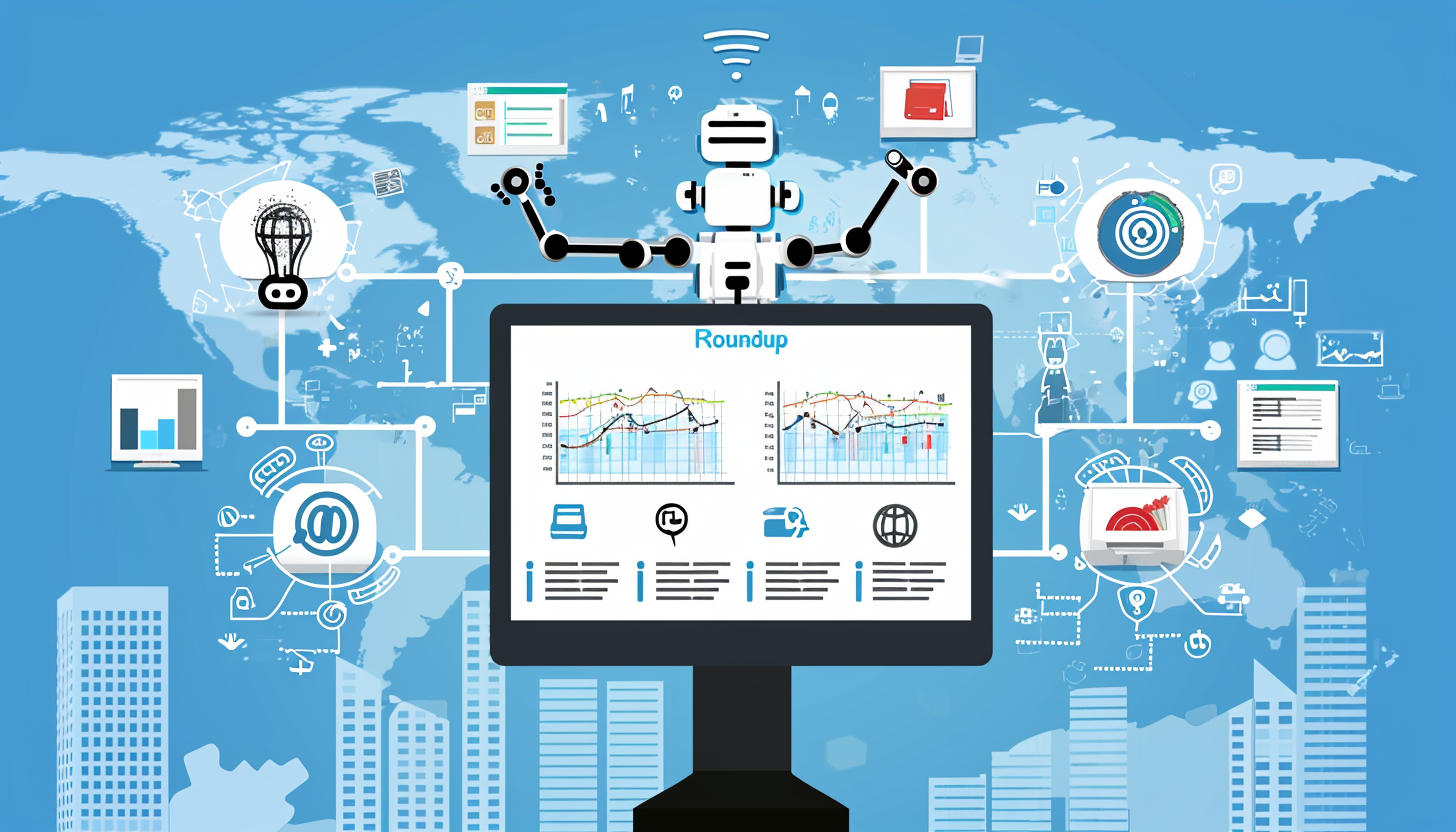 Happy New Year! I can’t believe it’s January 2024 already. One of the biggest things we’ve seen over the past 12 months has been the explosion of AI tools. We’re going to be talking about a broad spectrum of different tools and bits and pieces here today.
Happy New Year! I can’t believe it’s January 2024 already. One of the biggest things we’ve seen over the past 12 months has been the explosion of AI tools. We’re going to be talking about a broad spectrum of different tools and bits and pieces here today.
First thing I’ll say is that many of these are free, so go ahead and try them out. We use AI for so many practical business applications: content writing, image creation, social media, transcriptions, graphics, and for general organization.
Let’s dive in and take a look at a bunch of these tools we’re using for 2024!
Customer support
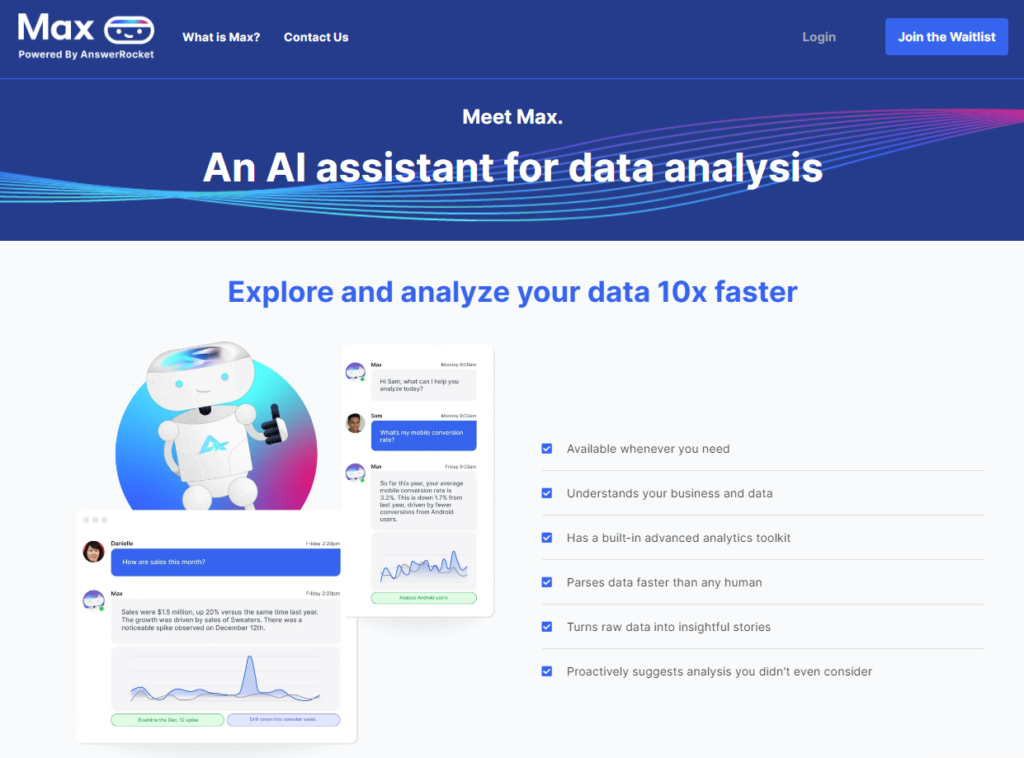 Max.ai is one of the first I have in mind in relation to customer support. We’ve got a lot of different “buckets” of customer support in our business. We have support for people who buy our courses and training programs. We also have our ecommerce businesses and brands. This is a tool that I only found out about in the past couple of months, and it has the ability to streamline customer support.
Max.ai is one of the first I have in mind in relation to customer support. We’ve got a lot of different “buckets” of customer support in our business. We have support for people who buy our courses and training programs. We also have our ecommerce businesses and brands. This is a tool that I only found out about in the past couple of months, and it has the ability to streamline customer support.
One of the things you can do is feed it your information, which could be through PDFs or videos. Max then learns what the content is. If a customer emails you about something, it can give an automated, intuitive, and dynamic reply based on what’s being asked.
Let’s say you are someone who’s invested in one of our training programs, and you need to find something that was in the training, or need the best guideline for doing something. You ask that as a question, and get an automated reply from Max.ai. The program gives you info on exactly what you’re looking for.
We’re starting to incorporate this into different parts of our business. We haven’t built it into our training program support yet, but it’s something we’re looking to do. It looks like it can provide a faster and more accurate support response, and just gives all around better replies to a query.
Even more interesting, you can combine the human element with the AI element in this tool. For example, you can have it draft replies for you without actually sending them. A human support staff member can then read the reply, and edit or hit the send button.
There are not many people who know about this tool, but I actually met one of the cofounders of Max.ai recently in person, and I was completely blown away. So we’ve started building it into some of some of our business segments.
Art and Branding
AI art generation and branding are what we call text-to-image models. We’ve been looking at Midjourney, DALL-E, and Bing Image Creator. To be honest, in terms of output, we love Midjourney. DALL-E is a close second.
DALL-E is much easier to onboard with because you don’t have to go to a Discord server (though Midjourney is transitioning to their own web-based interface, right now called “Midjourney Alpha“). Right now, you set everything up in a Discord server, then type in the “/imagine” prompt and describe what you want.
You can get very creative with this. You could say for example, “/imagine a boy sitting on a hoverboard in the middle of the Sahara Desert eating ice cream”, and in a matter of moments it will create 4 versions of a fictitious image. You can also add a pre-existing image into the prompt which basically tells Midjourney to create an image in a similar style.
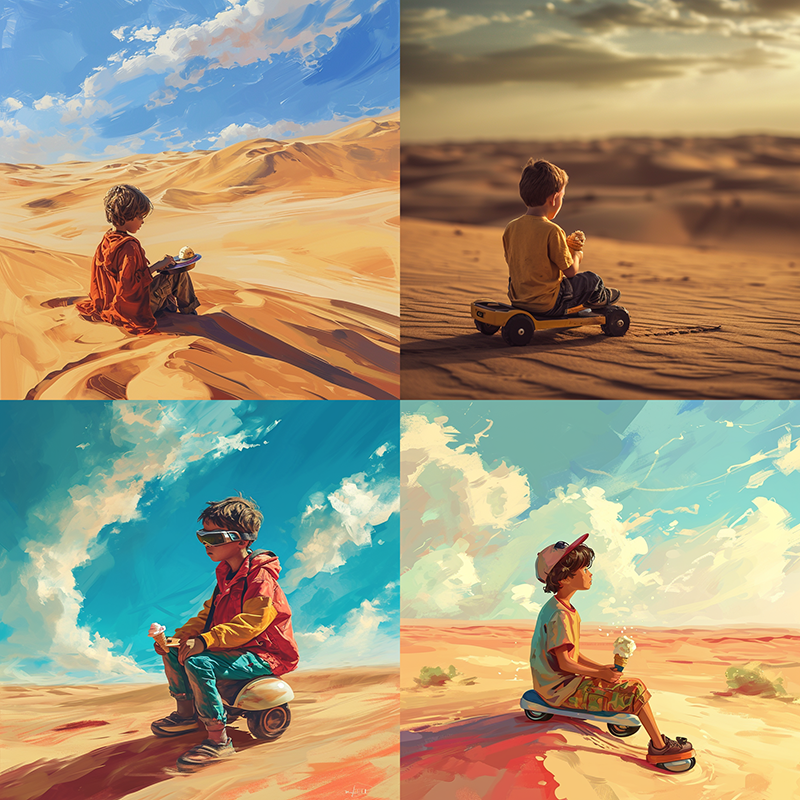
Looks like Midjourney has problems figuring out what a hoverboard is…
However, for people who are not familiar with Discord, it’s a platform that Midjourney requires you to use, and for me, that’s Midjourney’s biggest weakness. It’s not as user-friendly as DALL-E, or Bing Image Creator. We’ll see how the website-based Midjourney Alpha will perform.
For DALL-E, all you do is ask ChatGPT to create a prompt for you. You then put that prompt into DALL-E to get the output that you want. The beauty of asking ChatGPT is that it is the same company and creators (Openai.com). ChatGPT knows exactly what prompt to give you the best output, and the paid version combines both programs into one.
Bing Image Creator is probably the simplest of the three, in my opinion. It’s integrated into Bing, and if you go to the website, it simply says “What do you want to design?”
Just like Midjourney but without special prompts, simply type, “a boy sitting on a hoverboard in the middle of the Sahara Desert eating ice cream”, and it will get to work generating images for you. You can get even more specific by talking about a style of design. You could say watercolor or you could say pencil sketch or any number of different things.
So Bing Image Creator, I think, is one that’s for the everyday user. Note that it’s actually powered by Dall-E 3, which makes sense, as Microsoft, owner of Bing, is the largest shareholder of OpenAI.
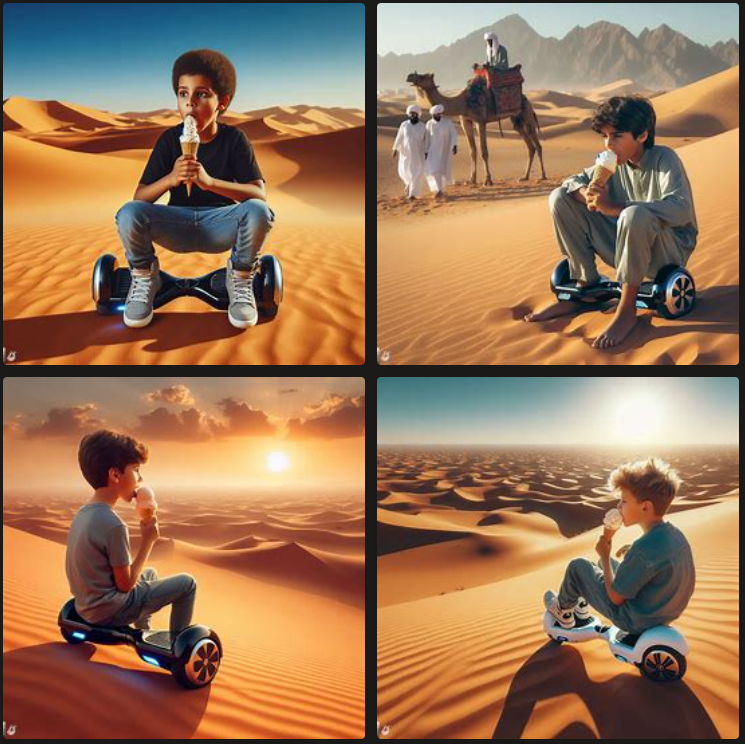
Those are hoverboards!
There are so many practical uses with the creation of generative art, branding and images. You can use them in social media marketing for practically anything… content marketing, brochures, email, logo creation, anything you can think of!
In fact, Argentina, towards the end of last year, had the presidential elections. They were billed as the first AI elections, because both of the main candidates were creating political propaganda style images on billboards using AI tools. For our left wing party, they created images inspired by old Soviet propaganda showing signs of strength and unity. They also shared how they created them and what some of what the prompts were.
I saw another where the right-wing candidate had a triumphant picture of himself, and the left-wing candidate looked like someone who was out of The Walking Dead. These were on massive, gigantic billboards on the side of highways. So there have been some interesting write ups and analysis about our country having the first government election with AI marketing.
Copywriting
With regards to copywriting, and generating content in general, we started with the granddaddy of the A.I. revolution, ChatGPT. That was GPT3, and we now have GPT4, which is the paid version that is about $20 or so a month. It’s more advanced in a lot of ways than its competitors; however, it doesn’t have the correct information after 2022 for versions older than GPT4.
When you onboard with GPT4, it’s integrated with Bing.com, so you have the ability to search and scrape the web for new information. For now, if you’re asking for something current, it basically searches and retrieves content from Bing.
ChatGPT is evolving all the time, and It’s hard to keep up with it, even using it every single day. They’ll often show a pop-up saying “Here’s what’s new” and I barely even read it. Just thinking of some recent new features I can remember, they now have voice-to-text on my phone, so I can verbally ask it questions, and the ChatGPT app will transcribe it into text to submit.
As for Bard, Google’s competitor to ChatGPT, they have the ability to watch and summarize Youtube videos for you. So this AI tool is great for consuming content, and if you are in that perpetual growth and learning phase, you can more easily keep abreast with all the latest information on your favourite channels.
Recently, I grabbed the YouTube URL of one of my recent episodes from my podcast The Growth Booth, then copied it into Bard, and said, “Give me an overview of the key points covered in this video.”
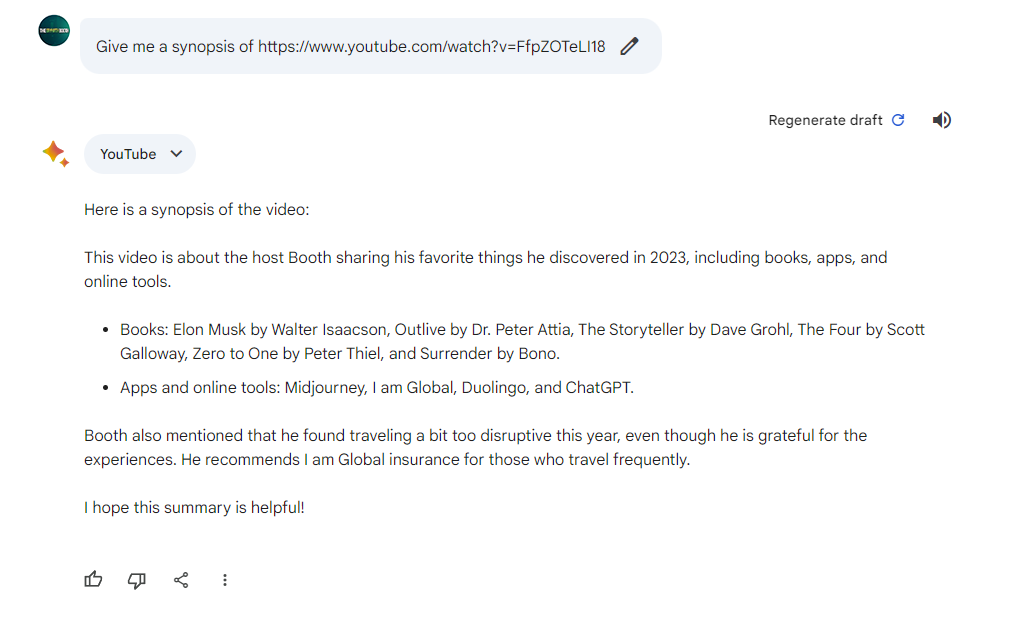
A couple of seconds later, it came back with a bullet point breakdown of what was covered in that particular podcast episode. I then went back to Bard and I said, “This is great. Can you dive a little bit deeper?” and it dove deeper and gave me more information.
What blows my mind is how quickly Bard brings that information back to you. Obviously, since Google owns Youtube, Bard already has the information, but I am still impressed.
Previously, the way I consumed content without sitting through a 30-minute video would be to get the video transcribed through an AI tool (we’ll talk about some of these later), and then feed that transcription into Chat GPT so I could get a summary. Now I no longer need to do this.
There is also Copilot from Bing. It’s useful for travel plans and restaurant bookings because it searches the web in real time. I put it to the test and I said, “Give me some nice restaurant ideas for me to go with the family,” and I put in Masterton, New Zealand, which is a very small town with few restaurants. It gave me some good options based on current data and availability, opening hours, and so on and so forth. So it works pretty well. I’m looking forward to using it for more travel plans and hotel reservations.
The other thing we’ve been testing out is Anthropic for reading books for you. You can ask any question once you register. I’ve been testing Anthropic recently, and I still prefer GPT4, although the output from Anthropic is quite voluminous.
Lately Anthropic, instead of outputting content, has been apologizing to me for not giving the correct output, instead of actually doing the work. It sounds like the AI is getting a bit “lazy” (some have reported ChatGPT doing the same thing), so we’ll probably see Anthropic improve a lot over the weeks and months ahead. It’s definitely one to look forward to.
Video Creation
Invideo is something that we’ve used to create videos from text prompts. Like other programs, the key is to use ChatGPT to create the prompts for us.
Another interesting program is RunwayML, which creates short three-second videos for you. Run a prompt in ChatGPT to create what you envision, then copy and paste into this program.
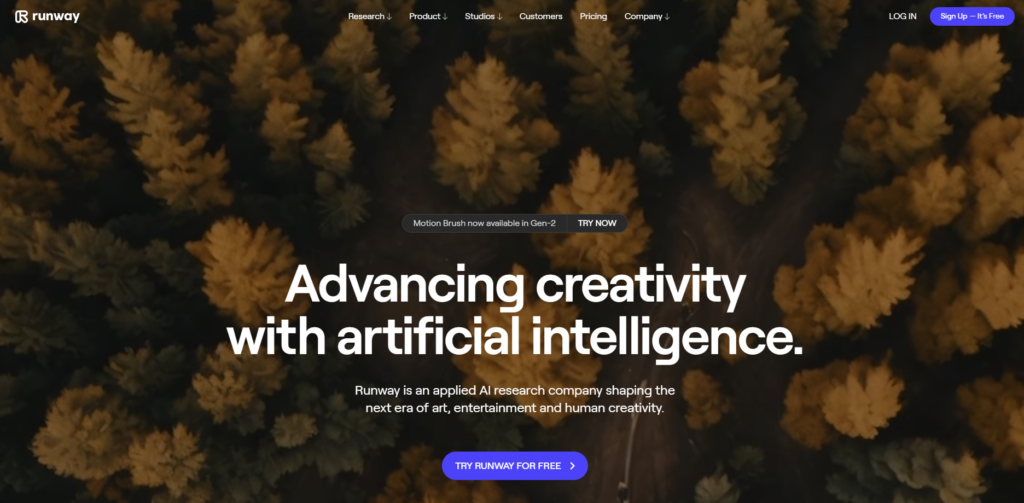
There’s also Stable Video, which itself started as the A.I. image generator Stable Diffusion (I don’t really mention them because there’s installation files involved and a higher learning curve.) I still think RunwayML is lightyears ahead for video.
I know that in six months’ time, a year, 18 months from now, we’re going to be looking back at what we’re amazed with now, and we’re going to feel like this is prehistoric and elementary to what we’re doing now.
But these are the building blocks of something far more sophisticated. Imagine a time in the future where you need to make a 15 minute sales video highlighting the benefits of some new gizmo, gadget or info product that you created (presumably using AI to help create it, of course!) You’ll be able to simply explain what you need to one of these tools, and it will create the entire thing from start to finish.
Another example: “Create this being presented by such-and-such a person,” and even accurately in a different language, things that we’re not quite at right now (though just recently you can now create YOURSELF as a video avatar, available through inVideo and I’m sure other programs).
You can clearly see how tools like Invideo and RunwayML are starting to provide some frameworks and act almost like building blocks because they allow us to think outside the box and be like, “Oh, wow, I can generate this type of video.”
I remember about a decade ago using a tool called Animoto (which I’m sure is reinventing itself right now.) Back then, it was a novel way to combine audio tracks with printed text and custom or stock images into a fun and dynamic video presentation. This was a long time before any of the current AI was even being conceived. The output that it gave us was a starting point when we started to imagine what content and video creation could be like in the future.
I just think it mind boggling that you can now (or very soon) give a 20-word or 100-word prompt to a tool that would then create you an HD quality sales video in the tone of some world famous copywriter and spoken in Japanese to a Japanese audience.
I’m definitely going to look back on this post in a year’s time to compare and contrast where we’re at in 2025, because I feel like we are truly in our infancy right now!
Transcription
We were using Veed.io in in the past and that was very good, but then they changed their pricing structure that was no longer good for us. We then went on to two other tools like Riverside.fm, which is the tool that we use for recording episodes of my podcast, The Growth Booth. Riverside is a tool most similar to Zoom; however, it is designed for podcasts, with multiple video streams that Zoom doesn’t have. Transcriptions is also one of its abilities.
We also used Loom in the past as well. I use Loom now mainly for recording screen capture videos. One of the things that it does really well is automatically create subtitles with a transcription of what’s being spoken in the video.
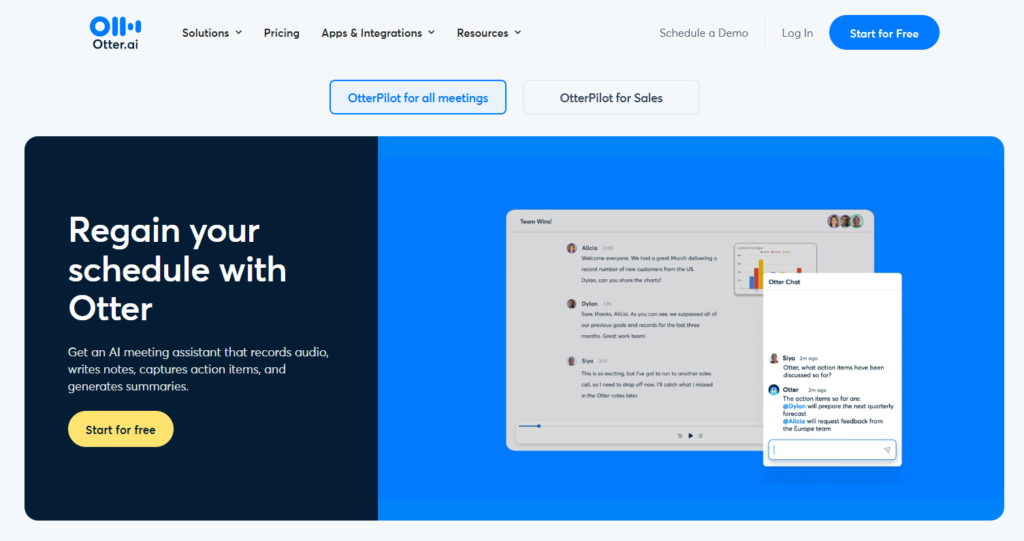
We now really like Otter.ai as a speech-to-text tool because it has evolved quite well over the last year. We use this tool for video transcriptions, closed captions and summaries. They look to be rebranding as an A.I. meeting assistant, but they still have all their transcription abilities.
Google Docs also has a feature where you can create documents by narrating them through a microphone. Go to Tools > Voice Typing. Voice typing in Google Docs is phenomenal. I remember not long ago that these voice-to-text tools would really struggle with my accent, and I don’t even have a particularly strong New Zealand accent.
Lately, though, it’s been nailing my voice and words. I started off speaking quite slowly and clearly, and I realized that it could handle since the words would appear correctly in real time with no lag or struggles. I started talking normally, and then I started speaking in accelerated fashion. It was still keeping up! So this is something that’s really cool, and 100% free, like many of the different tools that we’re talking about here.
Social Media & Content Creation
There’s been a whole upgrade to all the social media work that we have been doing. We can now create posts in volume, which is super handy if you want to schedule content days or weeks in advance, for example.
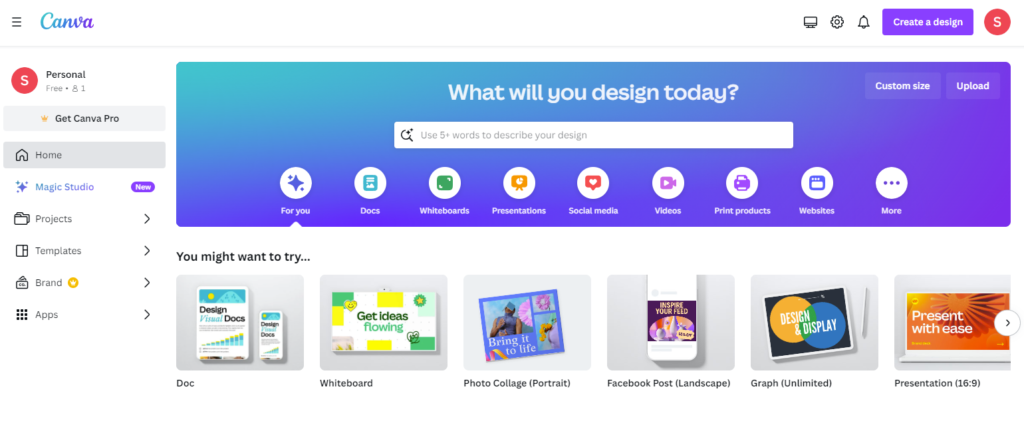
We do a lot of our social media graphics through Canva. Canva has long been the main online graphics tool that people in the creative space have relied on for creating templates, logos, posters, etc.
Recently, Canva held their “Canva Create Event“, where they announced new features to focus on reducing time, generating content and volume on social media, and the ability to repurpose content across several platforms.
It has a feature, for example, called Magic Eraser, which erases objects in Canva without painstaking tracing. It also has Magic Edit, where Canva will create an image based on a prompt we have, so it has capabilities similar to DALL-E or Midjourney.
They also have Magic Design, which will create for you a curated set of templates based on a single design. So you can upload a photo, and it will create designs for a promotional flyer, a social media post in the correct dimensions (Facebook, Pinterest, Instagram, etc), a business card, a graphic for a slide, anything you want!
They also have a text-to-image feature. You type in your text and then augment it with various styles. It also now has a layers feature, which means that as you add layers to your design, each of these layers can be separated out and edited one by one (similar to Photoshop), which used to be a real problem when using Canva in the past.
I feel like Canva has massively upped its game in the AI space, as all these tools just came out in the last couple months. It’s starting to act more like an AI version of Photoshop. Many of these also work in their free account.
Again, when I think back to the hours it took to create social media images, versus the ability to now do everything in just a couple of seconds, it’s just astonishing. And this is only the beginning. So kudos to Canva for all their practical improvements in the AI space.
Hootsuite is what we use for publishing across multiple different social media channels at once. You can take all your different outputs from Canva and then load them all into Hootsuite to help schedule your posts. Text and captions you can create from prompts.
Organization
Notion is a fantastic tool in that it is both a platform for creativity and for organizing yourself. It’s a place where you can centralize your knowledge and manage your projects. For its project management features, you can track your progress and create a vision board. There’s a huge amount of functionality with this program. It’s a place where you can house your knowledge, thoughts, ideas, and organize it all in a structured manner.
If you’re starting out with Notion.ai, I suggest you start with a template. From that you have a dashboard to customize and navigate to your objectives.
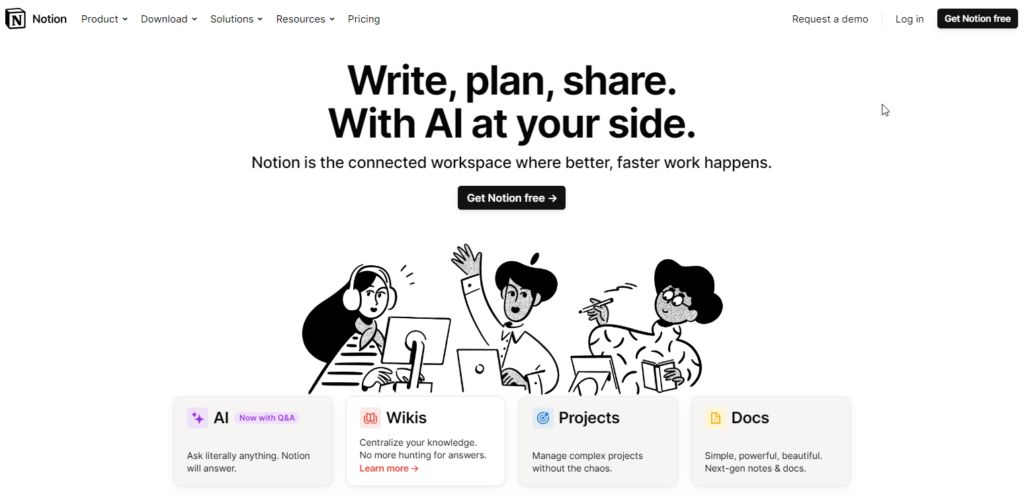
To supercharge your social media branding, one of the great things you can do is to combine your tools. As an example, if you are creating a marketing plan, you can create a prompt with ChatGPT about who your ideal client is.
As an example, research the demographics and psychographics so you have some sort of picture about your ideal client. Say they are a 55-year-old woman, and you’re doing branding for a whole new clothing range. You’re looking for colors, you’re looking for styles, you’re looking for what those people would buy. Feed in as much information as you can, and then you can ask GPT4 for a branding strategy for this.
Using A.I. Tools For Personal Use
I would recommend trying to find ways to not only use AI tools in your businesses, but also in your lives. I’m using them more and more in my personal life. One example is for educational activities I can do with my kids. As an example, we sat down and created Lego-themed creatures using AI images as a guide. It’s just incredible.
I’ve also used it for creating short stories that my kids are able to read. I simply asked ChatGPT to use short words that a five-year-old could read. My kids have been saying, “I want to hear a story about such and such,” and I generate it.
As a parent, I’ve spent a lot of time with bedtime stories over the last seven years, and after a while I tend to run out of imagination. These AI content creation tools don’t run out of imagination.
It’s now getting to the point that my kids are aware of all these tools and it’s normal for them. It’s sort of like how young children now assume that every single screen is going to be touchscreen. They see a screen, they’ll pick it up, and they’ll try to swipe. This is something that we all have to learn from them. A.I. is now just a common sense element in the world.
Phones, screens, smart speakers, everything in the home is going to continue to grow and evolve because of AI. I recommend that people test things out and dive into the deep end. You can’t break this stuff. You can play around with it, think outside the box, watch a YouTube video for a demo on a tool (and have Bard summarize it for you). Whatever you do, you’ve just leveled up in that particular thing.
AI is here to stay. We’ve just started scratching the surface, and I gave you a couple ideas here. There are so many different ways you can leverage AI right now, and probably the biggest thing that’s holding you back is that you don’t know in what ways you can leverage it.
So hopefully I’ve opened your eyes a little bit and given you a few ideas and pathways to get you thinking about what you could do with AI. Let me know in the comments below what your favourite tools and ideas are!



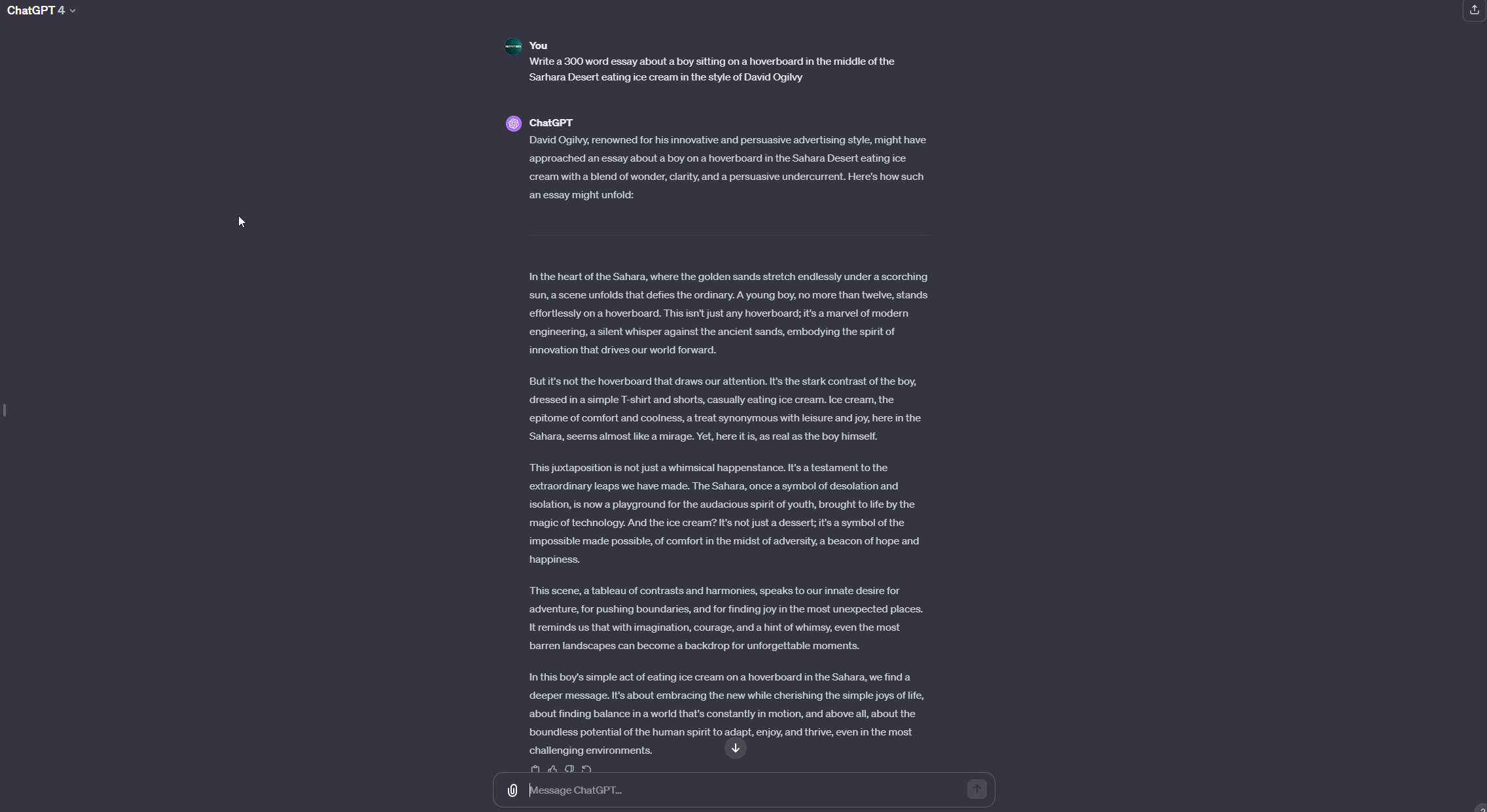




Aidan, this was such an insightful roundup of all the latest AI tools out there. I hadn’t heard of some of these like Max.ai and Anthropic before.
I like your point about how AI can not only help businesses but also our personal lives – using it for educational activities with your kids or even bedtime stories is brilliant! The possibilities seem endless. I’m excited to try out some of your recommendations, like Copilot, and see where this technology keeps heading in 2024 and beyond.
Aidan, I love how you’re always on the cutting edge when it comes to online business tools and innovations. Thanks for condensing all these AI options into one place
Wow, that stuff in Argentina is crazy, and I guess it’ll be showing up here! I might challenge my inner creativity and try making up a story prompt for my nieces next time I babysit them!